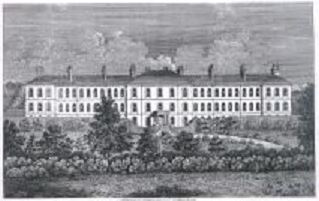b.1861 – d.1910
Intro
A summary of the evidence it has been possible to locate for Sylvester is a sad story of a person who spent most of his life in institutions. The 1851 census shows Sylvester’s mother Ann Pickett, aged 11, living with her mother Mary Winters, a shoe binder.
Early Life
On October 13th 1861, Sylvester was born to Charles Fury and Ann nee Pickett and on December 8th, he is baptised Catholic at St George’s Cathedral Southwark.
Sylvester has five brothers – Charles, William, George, Alfred b.1870 and James b.1870 in the workhouse.
Sylvester born too late for the 1861 census, his parents living in Southwark; his father is a soldier and his mother is a slipper maker.
The first entry for Sylvester in the workhouse registers is in 1866. He is found wandering, aged 5 years old by the police and he is taken to the workhouse. He is discharged the same day to his mother. There starts his institutional life.

On September 13th 1868, Sylvester and his brothers were ‘deserted’ by their parents on Cheapside. They were admitted to the Homerton Workhouse, Clifden Rd. His brothers were Charles aged 9, William aged 5 and George aged 3. The next day his mother comes and takes them out. They have no address. It is given as ‘casual’
St George’s Workhouse, Mint Street, Southwark.
In May 1870 he and his brothers are admitted to St George’s workhouse school as their mother is in prison and the father has deserted them. In September 1870, Sylvester is transferred to the Central District School.

In 1871, in the census, Sylvester is not present in the house with his family. His father is now a slipper maker. A sister to Ann, Mary Winter is living with them too.

In 1873, Charles his father dies leaving Ann with 6 children.
In and out of the Workhouse
The next time we find Sylvester in the records of a workhouse is February 24th 1877. He is single, aged 16 and destitute. There is an address of 103 Mint Street for him. A wood cutter? The workhouse is on Mint Street.
After that he is in and out of the workhouse, admitting and discharging himself. It appears that this is his ‘home’. His father is dead and life must have proved challenging for his mother.
A life of Asylums
The first time we find Sylvester in a lunatic asylum is March 8th 1878 when he is admitted to Camberwell Asylum. In the same year, we find his brother William having been admitted to the Peckham Asylum on May 25th.
On January 14th 1879, Sylvester is discharged from Camberwell Asylum.
April 1st 1879 Sylvester is admitted to Bethnall Asylum having been discharged from the workhouse. On May 14th 1880 Sylvester is discharged from Bethnall Asylum and is re-admitted to the workhouse. He then goes in and out of the workhouse again on more than twenty occasions between 1880 and 1887.
On October 7th 1890 Sylvester is admitted to Nottingham Asylum, Nottingham and is discharged on October 29th 1893.

In 1874 the Government decided to give parishes 4/- (20p) per head to move pauper lunatics from workhouses to asylums. There were so many empty beds that some patients were brought in from London in 1890 and from Hastings in 1891. By 1900 there were 400 inmates. In the last quarter of the 19th century the building at Sneinton deteriorated badly. In 1891 the Commissioners in Lunacy condemned it as ‘this inconvenient, ill-constructed, ill-adapted asylum’. It was now under the control of the County Council who decided to press ahead with plans for a new asylum to replace Sneinton. From then on ‘this cheerless abode’ was allowed to run down. Yet, in 1900, the Superintendent, Dr. Alpin, claimed it cured ‘more than half of those who came to the asylum’. Not everybody who was mentally ill was confined to a Victorian asylum for many years.
The asylum in Nottingham
I would suggest that he remains in asylums for the coming years but this is not found in the registers. He travels the length and breadth of the country in this time. On September 1st 1897, he is admitted to Fisherton Asylum, Wiltshire and is discharged on September 26th 1899. On the same day he is transferred to Claybury Asylum in Essex. On May 29th 1901, he is returned to the Notts Asylum an stays there until December 12th 1906 when he is transferred to York Asylum.

Finally, on October 1st 1907 he is transferred to Long Grove in Epsom where he finds rest. Sylvester dies on March 20th 1910, and buried 4 days later on 24th March 1910 in burial plot 715a.
Author Comment
What a life of sadness, of institutional existence. Can we speculate that it was his early years in the workhouse, where he may have sought safety and security which made him institutionalised. In these places, regardless of the quality, he had a bed, food and water. He was safe from life on the streets.
Did Sylvester suffer from mental illness? The records do not tell us this (so far). We might assume that he was incapable of independent living. However, members of the family did go on to have comfortable lives, to marry and to have children.
This is a family where so much more research could be carried out but that would be for family members to do.
On Ancestry there are descendants of Sylvester’s brother. The descendants go to the current day. Sylvester is not apparent in the tree, probably because he does not show on the 1871 census with the rest of the family. The researcher would not have realised he existed probably. The ancestry link to the tree is https://www.ancestry.co.uk/family-tree/person/tree/11077927/person/-9805077/facts The tree belongs to member ‘barbarajware’, an 81 year old keen genealogist. There are detailed descendant profiles for the brothers. It would appear that the family have no idea about Sylvester.



